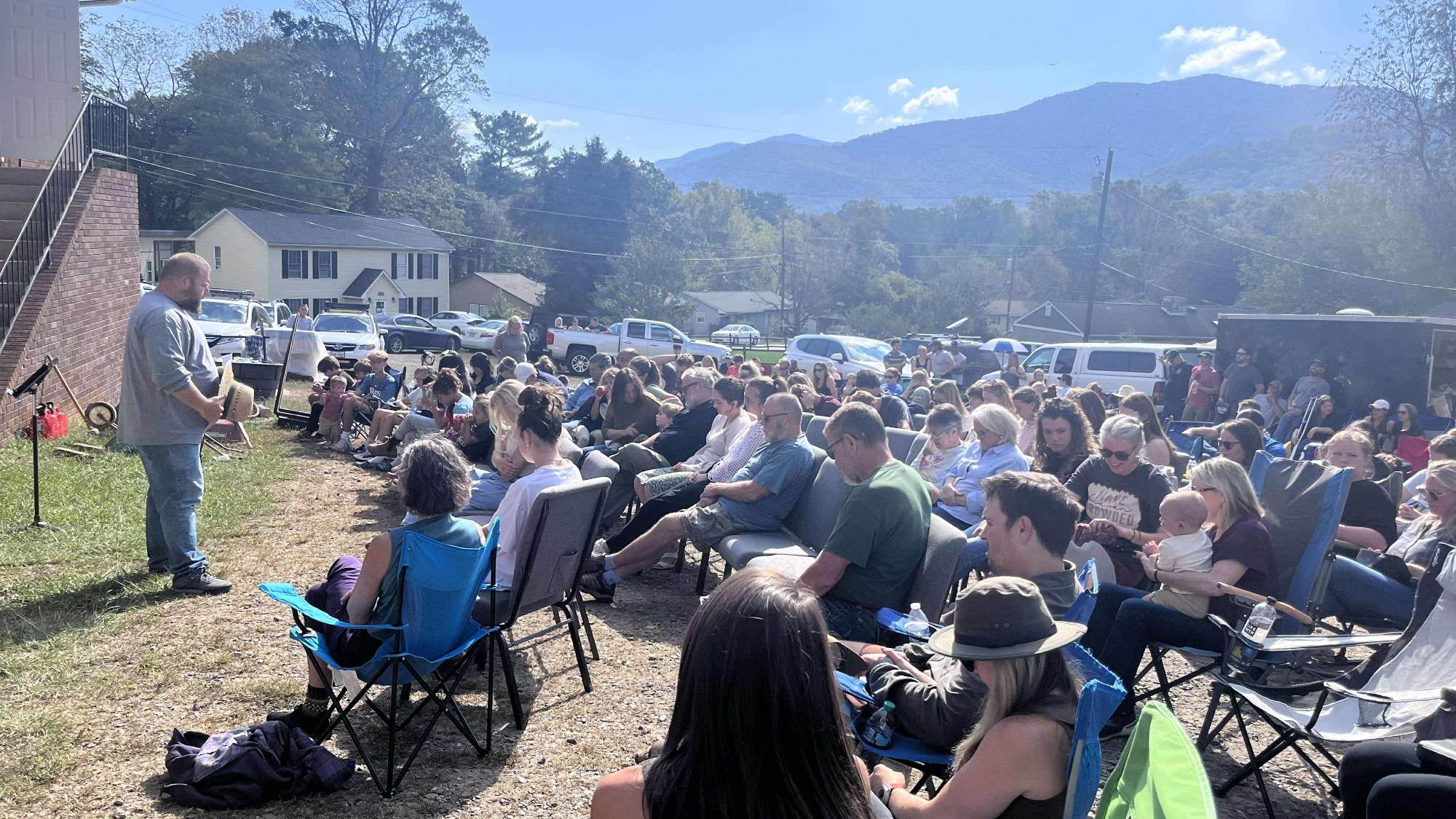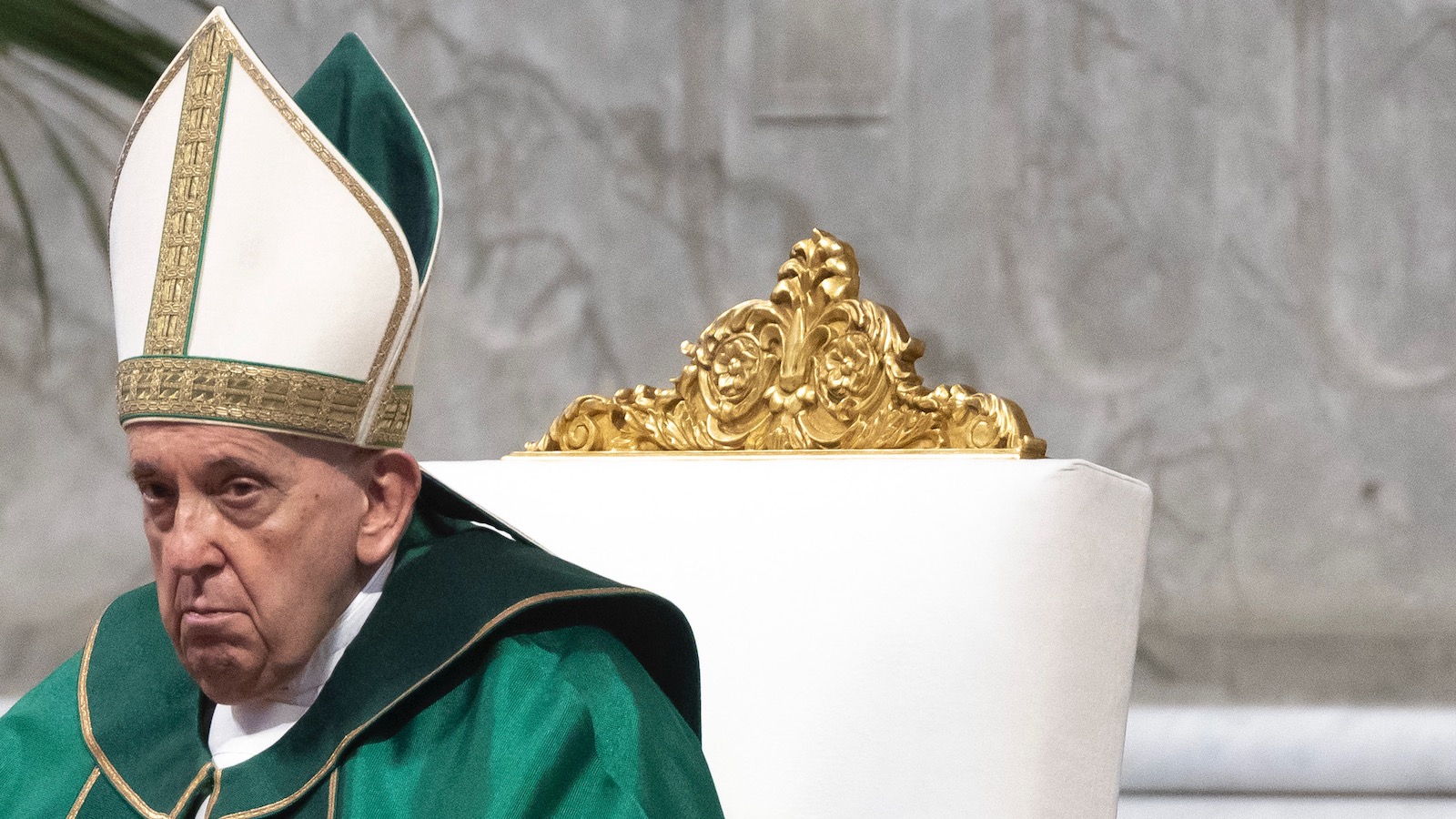On a sweltering January day in 2018, Pope Francis addressed 100,000 of the faithful in Puerto Maldonado, Peru, not far from where gold mining had ravaged an expanse of Amazon rainforest about the size of Colorado. “The native Amazonian peoples have probably never been so threatened on their own lands as they are at present,” he told the crowd. He simultaneously condemned extractive industries and conservation efforts that “under the guise of preserving the forest, hoard great expanses of woodland and negotiate with them, leading to situations of oppression for the native peoples.”
Francis denounced the insatiable consumerism that drives the destruction of the Amazon, supported those who say Indigenous peoples’ guardianship of their own territories should be respected, and urged everyone to defend isolated tribes. “Their cosmic vision and their wisdom have much to teach those of us who are not part of their culture,” he said.
To Julio Cusurichi Palacios, an Indigenous leader who was in the stadium that day, the words from the head of the Catholic Church — which claims 1.4 billion members and has a long, sordid history of violence against Indigenous peoples worldwide — were welcome and momentous.
“Few world leaders have spoken about our issues, and the pope said publicly the rights of Indigenous peoples were historically violated,” he said after Pope Francis died last month. “Let us hope that the new pope is a person who can continue implementing the position the pope who passed away has been talking about.”
Vincenzo Pinto / AFP via Getty Images
During his 12 years as pontiff, Francis radically reshaped how the world’s most powerful religious institution approached the moral and ethical call to protect the planet. Beyond his invocations for Indigenous rights, Francis acknowledged the Church’s role in colonization, and considered climate change a moral issue born of rampant consumption and materialism. As the Trump administration dismantles climate action and cuts funding to Indigenous peoples around the world — and far-right politics continues to rise globally — experts see the conclave’s selection of Robert Francis Prevost, or Pope Leo XIV as he is now known, as a clear beacon that the faith-based climate justice movement his predecessor led isn’t going anywhere.
In 2015, Pope Francis released his historic papal letter, or encyclical, titled Laudato si’. In the roughly 180-page document, he unequivocally identified planet-heating pollution as a pressing global issue disproportionately impacting the world’s poor, and condemned the outsize role wealthy countries like the U.S. have in contributing to the climate crisis. With it, Francis did what no pope had done before: He spoke with great clarity and urgency about human degradation of the environment being not just an environmental issue, but a social and moral one. Laudato si’ established the definitive connection between faith, climate change, and social justice, and made it a tenet of Catholic doctrine.
The lasting influence of Francis’ encyclical would be buoyed by his other writings, homilies, and his direct appeals to world leaders. He was, for example, credited with helping rally nearly 200 countries to sign the 2015 Paris Agreement, regularly urged cooperation at international climate summits, and released a follow-up to his pioneering encyclical in 2023 that sounded the alarm in the face of the climate crisis.
“Pope Francis routinely said that we have a throwaway society. We throw away people, we throw away nature … and that we really need a culture that’s much more based in care,” said Christopher Cox, executive director of the Seventh Generation Interfaith Coalition for Responsible Investment and a former priest. “That means care for people, especially the most poor, the most vulnerable, the most marginalized. And we also need much greater care for creation. We’ve been given a beautiful earth and we’re consuming it at a rate that goes far beyond what will be able to sustain life for the long term.”
The first Latin American pope, Francis was unique in implicitly embracing some elements of liberation theology, a Catholic social justice movement that calls for the liberation of marginalized peoples from oppression. Although Francis was occasionally critical of the doctrine’s Marxist elements and never fully supportive of it, many observers see his statements regarding poor and Indigenous peoples as reflective of the doctrine’s central values.
“Right from the beginning of his papacy, that outreach, that recognition of Indigenous ways of being Catholic and Indigenous language in Catholicism, heralded — up to that point — the most expansive official recognition of Indigenous contributions to Catholicism thus far,” said Eben Levey, an assistant professor of history at Alfred University who has studied the relationship between Catholic Church and Indigenous peoples in Latin America. In the centuries since conquistadores arrived in the Americas and forced Indigenous peoples to accept their religion, many Indigenous communities have made Catholicism their own, and a growing number of church leaders have embraced the idea that there are multiple ways of being Catholic and that Catholicism and Indigenous cultures can coexist.

Ernesto Benavides / AFP via Getty Images
A year after becoming pope, Francis approved the use of two Mayan languages, Tzotzil and Tzeltal, in mass and sacraments like baptism and confession. In 2015 he expanded that list to include the Aztec language Nahuatl, and in 2016, during a visit to Mexico, he celebrated mass in Tzeltal, Tzotzil and Chol.
In 2022, Francis officially apologized to Canada for the residential schools that ripped Indigenous children from their families, leading to the deaths of many who were later buried in unmarked graves. The following year, he rejected the Doctrine of Discovery, a religious concept that colonizers used to justify the illegal seizure of land from Indigenous peoples and became part of an 1823 U.S. Supreme Court ruling that described Native Americans as “savages.”

Artur Widak / NurPhoto via Getty Images
“The Doctrine of Discovery is not part of the teaching of the Catholic Church,” Pope Francis said, adding that he strongly supports the global implementation of the United Nations Declaration on the Rights of Indigenous Peoples. He also drew a clear connection between those rights and climate action: In 2023, he made clear that Indigenous peoples are critical to fighting climate change when he said, “Ignoring the original communities in the safeguarding of the Earth is a serious mistake, not to say a great injustice.”
But Pope Francis’ progressivism had its limits. In 2019, he called for a meeting of church leaders, known as the Synod of Bishops, for the Pan-Amazon region to address issues affecting the Amazon Basin. Indigenous Catholics who attended brought up illegal logging and violence against land defenders and proposed reforms. “The ancestral wisdom of the aboriginal peoples affirms that mother earth has a feminine face,” reads the document that emerged from the gathering and urged the church to give women more leadership roles and allow married deacons to be ordained as priests. In his response, Francis condemned corporations that destroy the Amazon as committing “injustice and crime,” yet refused to embrace the proposals to make church leadership more inclusive of women and married men.
Francis’ climate activism was also riddled in constraint. He transformed how religious institutions viewed the climate crisis, framing a failure to act on it as a brutal injustice toward the most vulnerable, but could have implemented “more direct institutional action,” said Nadia Ahmad, a Barry University School of Law associate professor who has studied faith-based environmental action. Though the former pontiff publicly supported renewable energy adoption, called for fossil fuel disinvestment, and prompted churches across the world to go solar, he did not mandate what he deemed a “radical energy transition” across dioceses, schools, and hospitals. The work he accomplished “could have been amplified a bit more and had more accountability,” said Ahmad.
But that limitation, she noted, likely stemmed from contradictory politics playing out within the church — many traditional, conservative Catholics, particularly in the United States, resisted Francis’ progressive teachings. A 2021 study found that over a period of five years, most U.S. bishops were “nearly silent and sometimes even misleading,” in their official messaging to parishioners about climate change and the pope’s famed encyclical.
Though Pope Leo XIV has been lauded for his advocacy in defense of immigrants and worker rights — his namesake, Leo XIII, who reigned from 1878 until 1903 is known as a historical Catholic champion of social justice and equality — the new pope’s track record on engaging directly with climate change is sparse.
Still, Mary Evelyn Tucker, co-director of the Yale Forum on Religion and Ecology, sees comments the new pope made last year on the need to move “from words to action” as a promising sign that he will continue Francis’ commitment to communicating the urgency of a warming world. The timing of the conclave’s unprecedented decision to select the first pontiff from the United States, coming amid the Trump administration’s sweeping dismissal of climate action, elimination of environmental protections, and attacks on Indigenous rights, isn’t lost on her.
“It may be a signal to say ‘America, come back into the world community, come back into a planetary future where we collectively have been working to create a future worthy of our children and our children’s children,’” she said.

Valeria Ferraro / SOPA Images / LightRocket via Getty Images
Leo grew up in Chicago and is a citizen of both the U.S. and Peru, where he spent decades serving as a missionary and bishop before Francis made him a cardinal in 2023. He speaks five languages fluently and some Quechua, an Indigenous Incan language.
While he was working in Peru in the 1990s, Leo was critical of the government’s human rights abuses — though he refrained from explicitly taking sides in the political fight between Maoist rebels and the government of then-dictator Alberto Fujimori, according to Matthew Casey, a historian and clinical associate professor at Arizona State University based in Lima. Still, his reaction to the country’s authoritarianism could provide a glimpse of what stances he might take as pope, Casey said. “It doesn’t matter who was abusing human rights, he was on the side of the people,” he said.
In 2016, the would-be pontiff spoke at a conference in Brazil where attendees talked about threats to the Amazon rainforest and Indigenous peoples who lived there. He praised Francis’ encyclical, describing the document as “very important,” and representing “something new in terms of this explicit expression of the church’s concern for all of creation.” To Casey, that suggests Pope Leo XIV, like his predecessor, has an awareness of the issues affecting Indigenous peoples, such as the rampant degradation of the environment.
“Both Francis and Prevost are attuned to Indigeneity in ways that they couldn’t have been if they worked in Europe or the United States, because the politics of Indigeneity in Latin America are just so different,” Casey said. More than a week after the conclave that named him pope, communities across Peru are still celebrating the selection of Pope Leo XIV.
Francis and Leo’s shared experiences working with marginalized communities harmed by colonialism and climate change, and their commitment to the social justice aspects of the church’s mission, are particularly meaningful in this political moment, said Levey, the Alfred University historian.
“We are seeing a resurgence of ultra right wing politics globally, and the Catholic Church next to the United Nations is one of the few multilateral organizations perhaps capable of responding in some form or fashion to the questions of our modern age or contemporary moment,” he said.
Source link
Anita Hofschneider grist.org





